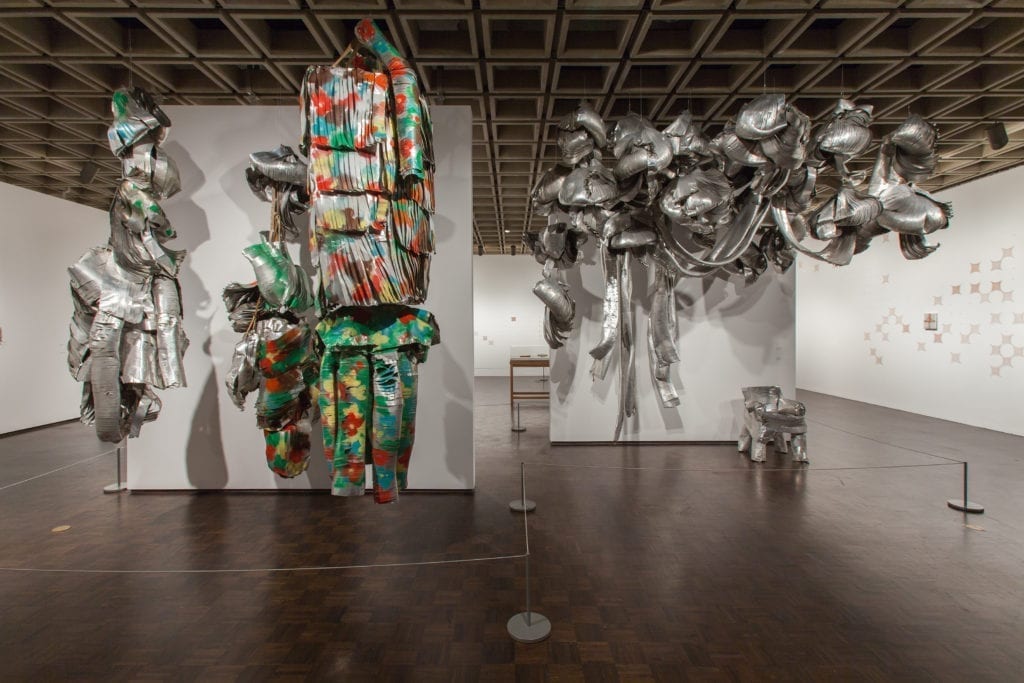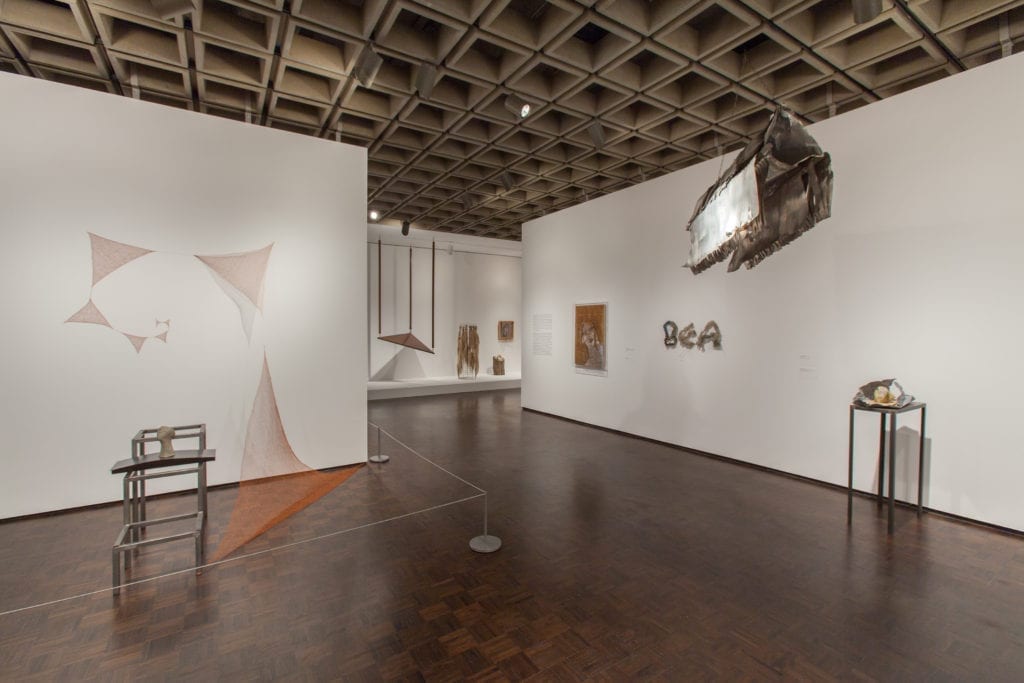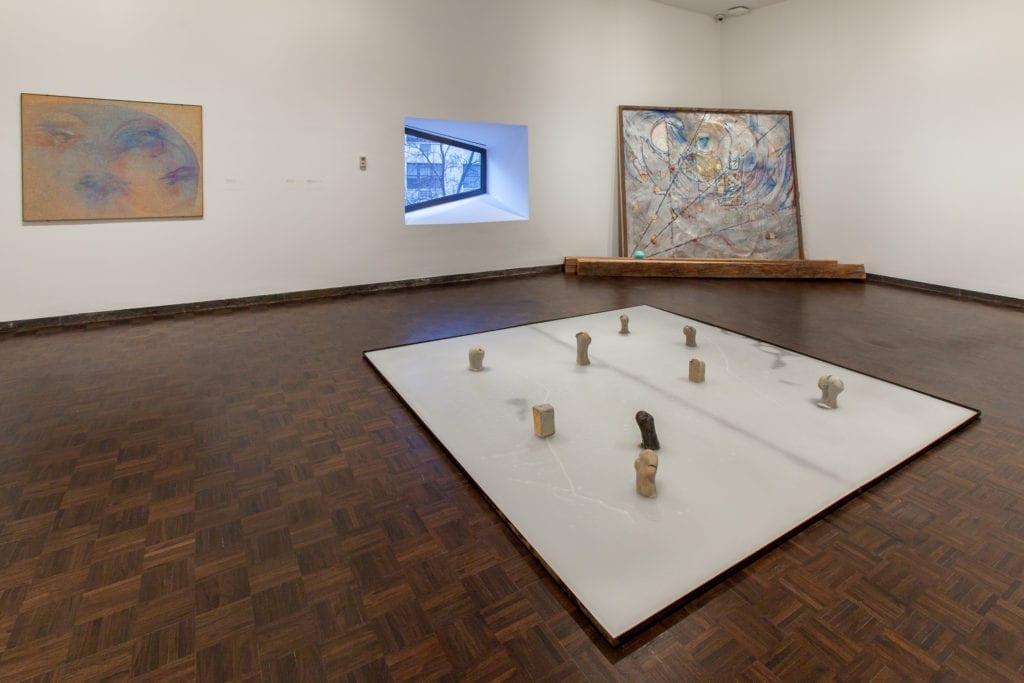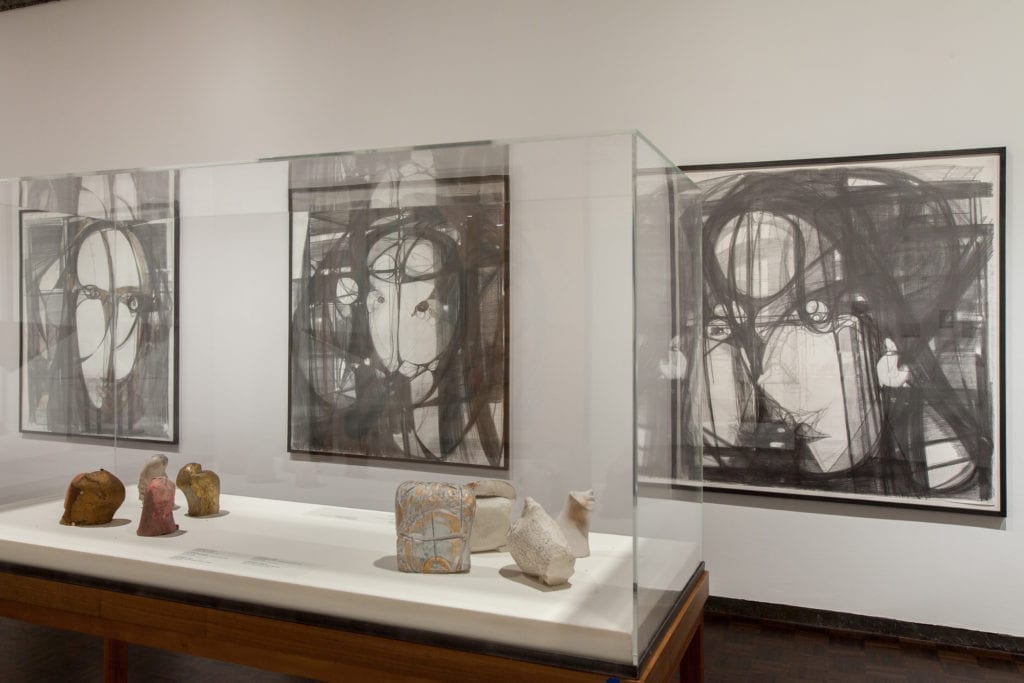
The Sky is a Great Space is the title of Marisa Merz’s retrospective, hosted through May 7th in the Metropolitan Museum’s new Met Breuer building in New York. From June to August, the show will then animate the exhibition rooms of the Hammer Museum in Los Angeles. The exhibition, curated by Connie Butler of the Hammer and Ian Alteveer of the Met, is accompanied by a formidable catalogue, developed in close collaboration with the Fondazione Merz in Turin.
It would have been difficult to choose a more eloquent title. Merz’s show, the first major retrospective in the USA, is an enormous sky, weaving planets and stars, as bright as they are pulsating. The exhibition installation avoids a chronological or thematic organization. Instead it offers to the visitor a constellation of fascinating episodes showcasing an entire artistic career, little known not only to the US public, but also to the Italian one. This vast body of work appears extraordinarily rich and coherent, warped in the intimate and sacred silence of the domestic environment, but at the same time showing itself defenseless with all the authority of whom it is honored. Merz is an artist, a mother, and a partner. Her career is proof of the humility and perseverance with which she intertwined these different aspects of life, so deeply that they cannot be separated. The threads comprising the person Marisa Merz are the same that enfold her artworks, those filaments made of nylon, copper, and graphite that hold us in front of her sculptures and drawings.

Born in 1926, Marisa Merz was considered a marginal figure in the Italian artistic movement of Arte Povera, a group she was not originally included in and from which she maintained a certain detachment. Operating in Turin beginning in the mid-1960s, she was the partner of Mario Merz (1925-2003), with whom she shared the enthusiasms and disillusionments of a lifetime. From a youth spent in a postwar period of unexpected economic progress and stormy class struggle, to the end of the century, and beyond, her production shows an unusual coherence and bestows upon her a preeminent place in Italian art history. Her revolutionary use of materials—nylon thread, copper wire, unfired clay, aluminum sheet, paraffin—alone would be sufficient to justify the importance of her oeuvre. To that one can add the interaction between object and space; issues related to perception; the combinatory and re-combinatory process underlying her works; and—perhaps the most remarkable characteristic—her rare ability to recount stories of universal interest and beauty using only a few simple gestures. Merz’s art is a poetry made of verses with a dissonant harmony, where heavenly and earthly qualities are mingled.
It is difficult to offer an overview of what is on show. The second floor of the museum gathers artworks that indistinctly range from the mid-1960s to 2016. The exhibition path, very rich—sometimes even too rich—is animated by two distinct forces. The first one, centripedal, moves the gaze of the beholder towards the earliest production of the artist, arranged in the central part of the exhibition. The other, centrifugal, pushes us towards the side rooms, where we find works of the 1990s and 2000s, displayed next to some older works because of the formal analogies and contrasts.

In the heart of this great sky, we are overwhelmed by the organic undulations of the Living Sculptures, sinuous and repulsive heaps of metal sheets hanging from the ceiling. Merz wire-stitched them for her daughter Beatrice and accumulated them in the rooms of her house. Behind them, precious weavings of nylon and copper wires tell the story of another everyday activity, the artist finding again in the domestic environment her favorite and essential place. And if Merz’s imagery is at the same time a hortus conclusus and an infinite sky that burns, so the exhibition at Met seems to look with one eye at the chaotic and creative intimacy of her house-atelier in Turin (on view too few photographs bear witness to the relationship between her art and domestic environment, which is by contrast well documented in the catalogue) and with the other to the endless possibilities of recombination allowed by her works (eloquent, in this perspective, are the rooms in which significant groups of drawings converse with recent paintings, installations, and sculptures).

A special mention must be reserved for the many Heads of unfired clay, which animate, like notes on a musical score, the dense tapestry of this exhibition. Because, even if it is true that—as Merz wrote—artistic practice is rife with silence (the silence of drawing / like the silence of the meadow / the silence of a flower), the impressions we have when visiting the show have a prominent auditory quality. Like the sky standing above us, silent only in appearance, Merz’s artworks are endowed with a strong and ancient voice.
